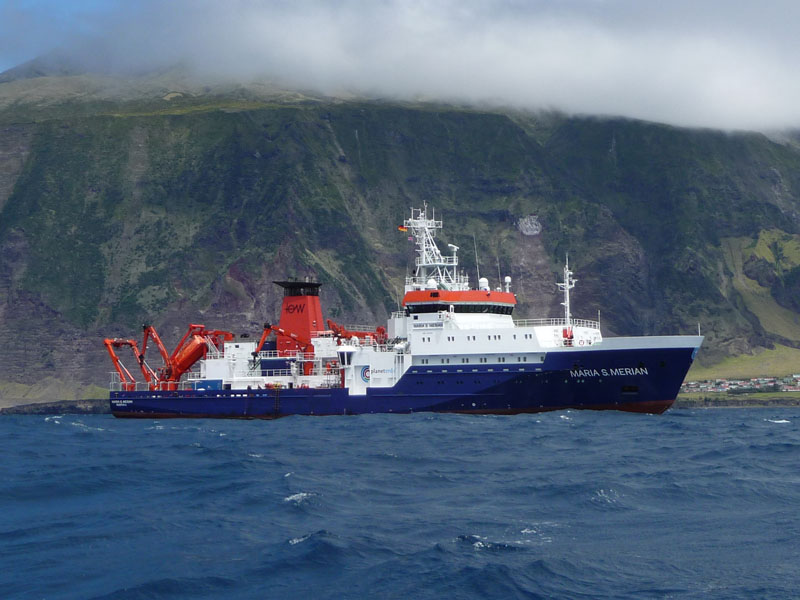MARIA S. MERIAN MSM54
- Area:
- North Atlantic Ocean
- Time:
-
12.05.2016 - 07.06.2016
- Institution:
- GEOMAR
- Chief scientist:
- Johannes Karstensen (20 attendees)
In the present state of the climate the North Atlantic is one of the major formation regions for the world oceans deep waters and thus closely influences the global circulation. Dense water formed in the Nordic Sea, and overflowing the Greenland Scotland Ridges, flows south in the Deep Western Boundary Current (DWBC). Within the subpolar gyre domain, the DWBC is supplemented by water masses formed in the Labrador Sea and eventually the Irminger Sea. Accompanying the southward deep water flow is a northward flow of warm waters in the upper layers. Complex conversion processes are associated with the transformation and densification of the surface water. In particular the heat released to the atmosphere during the conversion is in part responsible for the comparably mild European climate. The primary goal of the MSM54 expedition of the research vessel Maria S. Merian is on investigating the southward transport in the DWBC and the water amss transformation processes in the Labrador and Irminger Seas.
The expedition will start on the 12. May 2016 in St. John's (Newfoundland, Canada) and sets course to its first working area – the long-term moored observing infrastructure “53°N-Array”. The 53°-Array is operational since 1997 and measures the strength of the DWBC shortly before it exits the Labrador Sea, flowing further south towards the equator. At present the 53°N-Array consists of 7 deep sea moorings which have been installed in summer 2014 and that all will be maintained during the MSM54 expedition. The reinstallation is planned for another 2 years (until 2018). The time series of data obtained from the moored instrumentation will be analyzed regarding variability or eventually long term trends in transport and characteristics (temperature, salinity) of the DWBC. After the work in the 53°N-array area we will maintain long term moorigns in the two regions where intense transformations of surface water occur: the central Labrador and Irminger Sea. Moreover, we will survey the vertical distribution of physical and biogeochemical parameters along the ships track.
The expedition will ends on the 7th of June in the port of Reykjavik (Iceland). The expedition and the related studies are supported by the BMBF in the project RACE II. In part we received funding by the European projects NACLIM and AtlantOS. The works is embedded in the "Overturning in the Subpolar North Atlantic Program" (OSNAP) with international partners from across the Atlantic Ocean (USA, Canada) – only through this international partnership a deeper understanding of the processes that control the water mass transformation and the meridional heat and freshwater in the North Atlantic Subpolar can be achieved.



